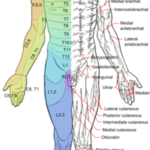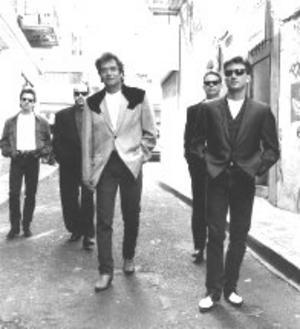Spinal cord disease, spinal cord damage or spinal cord trans-section syndrome are some of the terms used to identify the most commonly known term of spinal cord injury. The term “spinal-cord injury” is defined as a disturbance of the spinal cord that results in loss of sensation and/or mobility.
Some of these classifications may fall under brain injury conditions or central nervous conditions. There are two main types of injury levels, quadriplegic and paraplegia. An individual with either of the diagnosis may have a “complete” or “incomplete” injury depending on their motor and sensory level of feeling. It is important to have an understanding and be knowledgeable about this medical condition in order to provide the best quality of life for the individual with a spinal cord injury.
Like AIDS, cancer and other debilitating diseases, spinal cord injuries cross all boundaries. There are approximately 10,000 -12,000 cases per year reported and there are more than 200,000 cases over all. In recent studies it has been shown that statistically spinal cord injuries can be broken down into the causes, race, age, sex, education and the time of year injury was sustained. These studies have shown that most injuries are caused by motor vehicle accidents to white males between the ages of 15 and 26 years who have a high school diploma and occur most often during the months of July and August.
There are two types of spinal cord injuries, traumatic and non-traumatic. Traumatic spinal cord injuries are caused by a sharp blow or severe trauma to the spinal cord. When this occurs, the spinal cord experiences severe movement in the vertebrates. This may be caused from a swimming accident, fall, or motor vehicle accident.
A non-traumatic spinal cord injury is caused by a medical condition or complication. Medical conditions that could cause a non-traumatic spinal cord injury are HIV, multiple sclerosis or tumors due to lack of blood flow to the spine.
The spinal cord is made up of twenty-nine individual vertebrae. It’s approximately the width of a garden hose and is made up of four separate areas. These areas are called the cervical, thoracic, lumbar, and sacral and each area is responsible for different movements and sensations in the body.
The cervical area from C1 to C7 is responsible for the neck, diaphragm, shoulders, triceps, and wrist. The thoracic area from the T1 to T12 is responsible for the abdominal nerves and muscles. The lumbar area is responsible for the L1 to L5 is responsible for the hips, hamstrings, quadriceps, knees, and feet. The bottom of the spine, the sacral area S1 to S5 is responsible for penal erection, bowel and bladder control.
Spinal cord injuries are grouped into two diagnoses, quadriplegia and paraplegia. Quadriplegia is defined as the non-movement of the four limbs. The term “quadra” comes from the Latin for four and the “plegic” comes from the Greek meaning paralysis. Quadriplegia is also known as tretraplegia which means not having the use of the arms or legs.
Physical Manifestations
When a person incurs a spinal cord injury a number of different physical situations can arise. One of them is called “neurogenic shock” which consists of hypotension (low blood pressure), bradycardia (slow heart rate) and hypothermia (low body temperature). A patient can also go into what is called “spinal shock” which is the lack of tone, or contraction of muscles, between the C1 to T6 level.
Deep Vein Thrombosis (DVT) is a blood clot which can develop in the legs. When a DVT occurs a blood clot may break away and go to the heart or lungs; which can be life-threatening.
Orthostatic hypotension is a drop in blood pressure that can cause dizziness and fainting. This can happen when a patient is going from a lying position to a sitting position and the blood pools in the stomach causing the sympathetic nerves and blood vessels to avoid contraction.
Another condition to be concerned with is hypothermia because the body is unable to adjust to changes in temperature due to the damaged spinal cord. Proper management of the bowel, bladder, skin and breathing is very important in lessening the potential for physical conditions.
Post Injury Care
Most often patients, who have had a spinal cord injury, are admitted to a rehabilitation hospital or center directly or soon after being released from an acute care facility or the intensive care unit. There are many accredited rehabilitation centers located throughout the United States. A rehabilitation center’s main goal is to improve the quality of life for patients through offering knowledge about spinal cord injuries, providing information about ways to prevent complications and providing therapies.
Rehabilitation centers are made up of inpatient and outpatient facilities and services which, focus on supporting the patient in developing as much mobility and functioning as possible. Patients, receiving services post trauma often participate in different types of treatments including physical and occupational therapy. The length of stay in a rehabilitation facility varies depending on the type of spinal cord injury, the patient’s medical condition at the time of admission and the patient’s endurance. During the rehabilitation process the patient and care giver(s) learn how to manage issues that will affect the patient. Some of the issues are proper bowel and bladder management, blood pressure and skin care issues.
In the past accessibility for an individual with a physical disability was a challenge. Now someone with a physical disability has a variety of options available to them to maximize the quality of their life. They have the choice of using a manual/power wheelchair, electric beds, vehicles that have been adaptable for them to drive, body lifts, and more.
Body positioning is very important for individuals with spinal cord injuries because of the complications that can arise from poor or inadequate body positioning or posture. The spinal cord is made up of nerves, disk, ligaments, and tissues wrapped in a long tube the width of a garden hose. When the spinal cord is injured, messages are blocked and the body cannot respond and this is where adequate positioning comes into play.
Someone with a spinal cord injury, if they aren’t able to, needs assistance with repositioning themselves in their wheelchair. One needs to understand that just because a certain position may look uncomfortable, it may be completely comfortable to the individual with the injury. Proper positioning is also important on a personal level because if the individual is comfortable they are better able to be social which has a significant impact on their quality of life.
Sweating, dysreflexia (high blood pressure), muscle spasms and body aching are just a few of the complications that improper positioning can cause. A very common situation that arises, due to a lack of mobility, is what is called a pressure sore or a secondary condition. Sometimes called a skin ulcer, a pressure sore is damaged tissue (muscle, skin, and/or blood vessels) in a localized area that has been affected by “excessive” pressure.
Pressure sores are normally formed on the bony areas of the body such as the elbows, knees, and/or ankles. This is due to built-up pressure from surfaces like wheelchairs or bed rails. Moisture and rubbing can also cause pressure sores. Regardless of the cause, it is vital that this be taken seriously because it can change, for the worst, rapidly.
The area can go from stage 1 (red and blotchy but not open) to stage 4 (dark in color and open). Some preventable steps can be taken. Proper nutrition, surface conditions, and meditations can help to minimize this condition.
Spasticity is a condition that occurs as a person comes out of spinal shock. It affects the spinal cord from the C1 to T12 level, and the diagnosis can be complete or incomplete. It can be described as an involuntary movement caused by some stimuli, contraction of the muscles, and/or an increase in reflexes. When the spinal cord is injured the nerve tissues and nerve tracts become unbalanced causing an increase in the muscle tone and spasticity.
While spasticity can be uncomfortable, it does have its benefits, because it helps blood flow and muscle bulk. Stretching the muscles and body positioning throughout the day are temporary techniques used to decrease spasticity.
There are six oral medications used to control spasticity: Baclofen, Zanaflex, Dantrium, Benzodiazepines, Clonidine, and Neurontin. Proper dosage, and medical supervision are important due to the side effects. A Baclofen pump, a small catheter placed in the intrathecal area of the spin, or injections of a botulism toxin (Botox or Myobloc) are two methods for treating spasticity.
Range of motion (ROM) is the distance that a muscle or joint can stretch comfortably from a flexed position to an extended position. It can be either active or passive (done by someone else for the patient) exercise, depending on the individual. Limited range of motion can be caused by a variety of factors such as arthritis, infections, swelling, medical problems, and/or injury. In spinal cord injury patients, range of motion is very important because it helps to increase blood flow to the muscles and increase joint flexibility.
Since quadriplegic (tetraplegics), and paraplegics do not have complete use of their hands or legs, they must rely on passive range of motion. The caregiver or therapist must be properly trained in doing range of motion to avoid injury. Each joint needs to be moved to prevent contraction of the muscle. The main areas of focus of ROM are the shoulders, elbows, wrists, hips, knees, and ankles. It is vital that exercises are done on a regular basis to maintain the proper circulation and dexterity of the body.
Autonomic dysreflexia, also known as hyperreflexia or AD is a condition that occurs when an individual with a spinal cord injury experiences a sudden rise in blood pressure. Autonomic dysreflexia happens at the T6 level or above. This happens when some type of irritating stimulus below the injury level causes the individual to become uncomfortable and the brain cannot receive the message which would cause the nervous system to react.
There are a variety of symptoms that caregivers and physicians need to be aware of in order to prevent serious complications from A/D. A pounding headache, clammy skin, flushed face, slow pulse, goose bumps, and sweating above the injury level are some of the major symptoms to look for. These symptoms could be caused by an irritated bladder, a bowel problem, skin irritants, or other medical issue. Regardless of the cause, this matter should be taken care of immediately and if symptoms don’t subside medical attention should be sought immediately.
Bowel and Bladder Management
Bladder management is important for individuals with spinal cord injuries in order for them to maintain a healthy and filled life. The bladder is controlled by the autonomic nervous system with the purpose of removing waste from the body through urine. There are two conditions the bladder may undergo after a spinal cord injury – upper motor neuron condition and lower motor neuron condition. Each condition depends on the injury level of the spinal cord.
Urinary Tract Infections (UTI) are a major concern for spinal cord patients. A UTI is a bacterial infection in the urinary tract. There are several manual techniques utilized to drain the bladder including: intermediate catheterization (IC), reflex voiding and using one type of several catheters such as a Foley catheter, suprapubic catheter and an external catheter.
There are surgical procedures that can be done to drain the bladder but the patient should be evaluated for doing so. Persons with spinal cord injuries should always have a yearly follow-up with their urologist in order to make sure the bladder and kidneys are functioning properly.
The gastrointestinal tract is made up of the mouth, esophagus, stomach, small and large intestines, rectum and anus. Its’ main purpose is to store food and absorb nutrients for the body to use. The bowel is found in the large intestine and after a spinal cord injury is considered a neurogenic bowel because it no longer functions normally.
When the nervous system has suffered an injury and the bowel does not function properly a “bowel program” is necessary. This process is started during rehabilitation care and is based on diet, timing medication and the individual. The main goal of a bowel program is to avoid accidental bowel movements. There are a variety of procedures that can be used to assist in a bowel program. Digital stimulation, stool softeners, supplements and laxatives are just a few. The bowel is very trainable thus an individual needs to establish a routine that works best for them.
Controlling Body Temperature
The normal core temperature for the average person is 97.1F but for someone with a spinal cord injury, regulating body temperature is a lifelong concern. After sustaining a spinal cord injury, certain messages from the brain to the spinal cord are interrupted or stopped completely. The nerve endings that carry messages to control body temperature are part of the sympathetic nervous system.
Hypothermia – low blood pressure and hyperthermia – high blood pressure are two major health issues related to regulating body temperature for a spinal cord patient. The inability to regulate the body temperatures can be life threatening.
The brain sends electrical messages to the body by way of the spinal cord. When the spinal cord has been injured, electrical messages cannot be received and the body’s sensitivity response is interrupted. It is important to realize that after a person sustains a spinal cord injury their sensitivity to the sun is limited.
Patients with a spinal cord injury level of T6 or above need to be cautious of this complication, because it can lead to heat stroke. A spinal cord patient’s sense of temperature is impaired due to the inability of the body to cool itself down when it’s over heated. Over exposure to the sun not only can decrease the strength of some of the medications taken by the patient, it can cause autonomic dysreflexia. The patient will usually experience a loss of energy and feel sick during over exposure.
Breathing and Respiration
An individual with a spinal cord injury at the level T6 to T12 will experience a decrease in the ability to use their abdominal muscles. The nerves that control the muscles for breathing have been damaged and, depending on the severity of the injury, a ventilator (an assistive breathing machine) may be used.
Atelectasis (a collapsed lung), pneumonia, and aspiration (when a foreign object enters into the lungs) are complications which may occur due to the inability to breathe properly. There are different types of techniques that can be used to prevent these complications. Using a rotating bed is one technique that is used at the onset of a spinal cord injury but it is not known why this works. The “quad cough” is another technique used to assist someone unable to cough on their own. The assisted-cough device can also be used to assist breathing in that it pushes air into the lungs and quickly sucks it out. An abdominal binder can also be used because it correctly positions the abdominal muscles so that they are supported and can increase proper breathing. A combination of these techniques can be beneficial to the spinal cord patient.
Direct Care
Before leaving the rehabilitation center the nursing staff and physicians strongly emphasize the importance of being able to direct one’s own personal care. It is important that the caregiver and the person with a spinal cord injury maintain a good communication system in order for things to run smoothly.
Despite the inability of some person’s to physically assist in their care, being able to verbally communicate needs can be vital. Everyone has preferences about how they want things done or how they want things done. Persons with spinal cord injuries are no different. The challenge comes when they have to communicate these preferences to their caregivers and the caregivers have a different idea about how and what should be done.
Some caregivers have difficulty with the way persons with spinal cord injury direct their care and feels the patient is being bossy, demanding and/or complains a lot. Just like all relationships, the relationship between a caregiver and a person with a spinal cord injury needs to be based on mutual respect and a commitment to work collaboratively. Many times just being open and accepting of each other’s differences will go along ways when life gets challenging.
Universal Precautions
Universal precautions can be defined as using any medical technique such as exam gloves, goggles, and/or face shields to prevent the transfer of bodily fluids between the healthcare provider and the patient and steps should be taken to maintain the best possible care for a spinal cord patient.
Universal precautions are needed in the care of a spinal cord patient because their immune system is weaker than an able-bodied individual. Proper hand washing, the use of alcohol wipes, and vinegar to clean equipment & surfaces are a few ways to cut down on the spread of infections. Bacteria can enter into the body causing what has been called “super bugs” -bacteria that are resistant to antibiotics.
Pseudomonas, urinary tract infections, or staphylococcal (staph) infections are some of the most common types of infections that are risky for person’s with a spinal cord injury to catch. When someone does contract one of these infections, antibiotics are used.
Depression
Depression becomes a major factor for someone who has experienced a spinal cord injury. Every aspect of one’s life is affected and those around them will experience change as well. Depression can be seen in changes in sleeping patterns, eating habits and changes in the lifestyle.
A person goes from being independent and doing things on their own, to being dependent on others to assist them. Doing daily activities such as reaching over to answer the phone or turning on the lights – things we all do typically without thinking – becomes a goal for someone with a spinal cord injury.
The loss of the ability to participate in recreational activities can be another reason for depression. Someone with an injury level of C6 or above must also rely on assistance using the restroom which can be demeaning. It can be very beneficial to seek psychiatric assistance to help manage the depression and improve quality of life for the individual.
Circulation
Inadequate circulation is a major concern for individuals that have spinal cord injuries. The spinal cord is made up of four separate areas with nerve endings. These nerve endings are responsible for pain, pleasure and the sensation of hot and cold. The level of the injury and the damaged nerves play an important role in circulation complications.
Paraplegics and quadriplegics experience circulation issues on a daily basis because of their inability to shift their body weight when they become uncomfortable. Poor circulation can be reduced by avoiding tight clothing and keeping a close watch of bony parts of the body such ankles, knees, elbows and hips. Making sure there are no folds in the skin can also elevate the risk of circulation problems. Checking the skin on a routine basis will ensure the reduction of complications.
Medical Networking
In order to provide the best care for a spinal cord patient, it is important to be knowledgeable of the spinal cord, the types of treatments available for a spinal cord injury and knowledge about the life long issues that can have an effect.
Familiarizing oneself with the medical team in charge of the care of the person with the injury can be beneficial in that it helps to keep things running smoothly in the pre and post rehabilitation process. A spinal cord patient has a variety of physicians that oversee their care. Knowing the different doctors and their specialty area(s) is an important part of the care process.
Everyone, whether they have a spinal cord injury or not, should have a primary care physician who is responsible for common health and medical problems such as the flu or a cold. Persons with a spinal cord injury need a primary care physician as well as their special medical support team.
Rehabilitation physicians, which might include physiatrists (rehabilitation medicine), urologists, neurologists, orthopedists, psychiatrist etc, are specifically trained to support the health and well-being of persons with spinal cord injuries. In addition to physicians, a group of professionals who also support the health and well-being of spinal cord patients are occupational, physical, recreational, and respiratory therapists etc.
Vocational Rehabilitation
Persons with spinal cord injuries may need support to reintegrate back into their career or profession. If their injury was such that they are not able to return to their former career or profession they may need to acquire a new profession or career. Each state has a system for of vocational rehabilitation which assists people with disabilities re-enter the work force. The purpose of vocational rehabilitation is to support individuals with physical and mental disabilities to live independently.
Individuals interested in working with the vocational rehabilitation agency in their state can contact them by telephone, mail, or by going online. After completing the necessary forms and providing the needed information, the individual will be assigned a vocational rehabilitation counselor.
The counselor assists the individual in customizing an individualized plan focused on their employment goal. Vocational rehabilitation systems provide a variety of services from assessment, counseling and guidance as well as training and job placement. An individual should build a strong relationship with their vocational rehabilitation counselor and contact them regarding any changes that may affect their employment plan. Once an individual has been placed on a job and vocational rehabilitation services are no longer needed, it is important to close the case to allow others to access these services. It further assistance is needed post employment services can be provided.
Christopher Reeve and Stem Cell Research
Christopher Reeve, “Superman,” as most of us remember him, became paralyzed after a horseback riding accident in 1995. Christopher and Dana, his wife founded the Christopher Reeve Paralysis Foundation (CRPF) shortly after his accident. Reeve was committed to lead the world of research ahead in understanding spinal cord injury and creating treatments that would enhance the quality of life for those with spinal cord injuries.
CRPF is a non-profit organization that supports stem cell research which includes finding a cure for spinal cord injuries, developing new treatments for spinal cord injuries and providing resources for the disabled. Stem cell research is controversial and raises many moral and ethical questions. The CRPF believes stem cell research is the path to finding a way to cure the effects of a broken spinal cord allowing victims the opportunity to live a life of quality and productivity.





